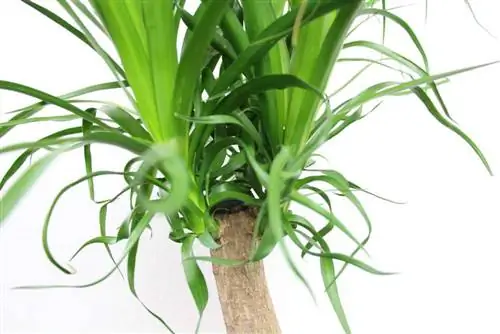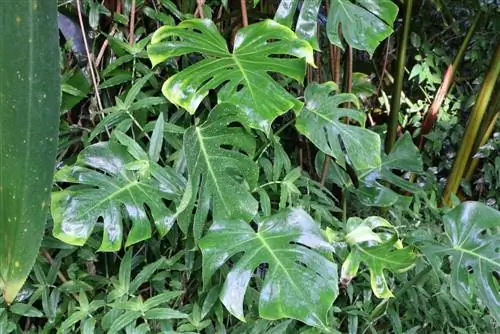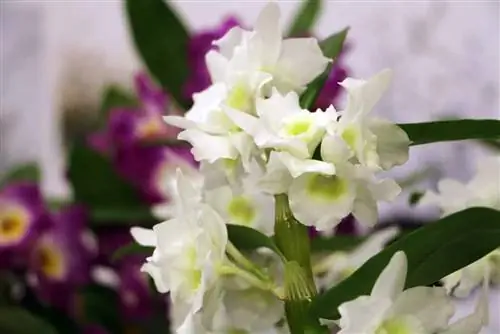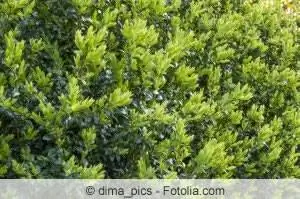- Author admin [email protected].
- Public 2023-12-17 03:39.
- Last modified 2025-01-24 12:45.
Willows are versatile and indestructible; they can be used as hedges, but they are also popular in forestry as a quickly renewable raw material. If you want to plant a willow tree in the garden or plant a hedge as a border, you can easily use willow cuttings. They grow quickly and are easy to cultivate. Here we explain how it works best.
Substrate and soil
Willow cuttings can be cut directly from the mother tree. The length depends on the purpose for which they are intended. Even long shoots root quickly, provided they are not purely green branches; the bark should already be woody. Around June or July, cuttings are cut with a sharp knife. These are placed in water, where most willow species grow roots relatively quickly. With some types of willow it is enough to simply stick them in the moist soil. Others even root when wrapped in a damp cloth. However, it is advisable to root them in water so that the development can also be followed. They can then be put in place.
The varieties Salix purpurea, Salix caprea and Salix alba have proven to grow particularly well. They all offer a pleasant sight in spring with the so-called pussy willows. Their strongly branched roots also strengthen the soil up to a depth of two meters, so they are often used as bank plants to strengthen the soil. Cuttings of the white willow, Salix alba and the willow, Salix fragilis are particularly suitable for this purpose.
- Willow cuttings do not require any special substrate
- cut the cuttings diagonally from the mother plant
Plants
There are willows of almost all sizes, some reaching over 30 meters high. For a hedge, for example, cuttings no more than 20 cm high are sufficient. After they have grown, they can be cut in the first year after planting so that they branch out well. A high-stem willow can be created from a cutting of 50 to 80 cm. If you want to have a living fence with intertwining willows, the cuttings should be more than a meter long in order to be shaped straight away. Silk willow and polar willow, which, as dwarf shrubs, do not grow too high, are particularly suitable as a living fence or intertwined hedge. Your kittens are a delight to the eye and a true bee paradise in spring.
Due to the strong, well-branched roots, willows can also be used excellently to fortify a slope. Place a number of cuttings directly into the soil, provide sufficient water without causing waterlogging, and after just a few weeks the young roots of the cuttings will give the soil more support.
- Never cut branches of the “pussy willow” Salix caprea in the wild, they are protected!
- Cut your willow back after flowering, then it will branch well.
- Polar willow and silk willow can be planted relatively close together; they form a dense hedge after just a few years.
Tip:
Before cutting, consider what purpose you want your willow to serve. As a hedge or living fence, it requires regular trimming and may need to be braided. As a solitary plant, it needs a lot of space over the years. It is only suitable to a limited extent as a container plant.
Watering and fertilizing
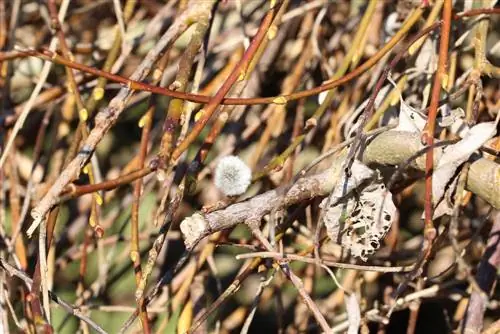
You can observe the cuttings in the water, within a few days roots will sprout so that the young plants can be placed in the ground. Thanks to its vigorous growth, the willow will grow larger quite quickly, but this also means that it will take a lot of nutrients from the soil in the first few years, even though it is known to be a frugal plant. It is advisable to fertilize young plants once in the first two to three years to stimulate growth, after which the plant takes care of itself. The soil must not dry out completely; watering should be carried out in dry phases. Willows thrive best in well-drained soil and require plenty of water.
Usage
In earlier times, willow branches were used for basket weaving, but also in the construction of half-timbered houses. This required large quantities of rods that were always freshly cut. For this reason pollard willows were cultivated, which produce numerous long shoots on their thick trunks. Pollarded willows are still an impressive sight today and are not that difficult to produce. They are particularly suitable as property borders, but require some care. Willow cuttings for pollard willow can be a little larger and thicker; silver willow and osier are well suited. The cuttings are radically cut at a height of one to three meters so that the first branched shoots soon emerge. This head cut must be repeated regularly to create the characteristic head.
- Willow branches as decoration are a real eye-catcher, even in the apartment
- Willow rods can be used excellently as support rods in the garden
- thicker willow branches can be used as posts and stems
- Willow cuttings can also be used as a trellis, excellent for low pea varieties or sweet peas
- if you want to prevent the rods and posts from sprouting again, remove the bark
Tip:
If you have a large garden, then plan a covered garden path. Place willow cuttings along the garden path, once the flexible canes have grown and shot up a bit, you can tie them together at the desired height, where they will then be pruned to branch as desired. This living tunnel can also be filled with climbing roses or clematis.
Diseases and pests
Like most plants, pasture can also be damaged by fungal diseases. Therefore, when cutting the cuttings, make sure that there are no spots. Willow rust in particular can affect all types of willow, it looks like orange flour and is quite easy to see.
Conclusion
Willow cuttings are grateful plants that can be rooted without much effort. Whether in water or solid in the ground, they show an incredible urge to grow. Due to the enormous vitality of most willow species, cuttings grow even under unfavorable conditions. The diverse possibilities of fast-growing plants, from purely ornamental plants to living fences, make willow an indispensable plant in our gardens.
What you should know in brief
- Willow is propagated by cuttings. You cut these in summer, i.e. in July or August.
- You remove a branch from a willow tree or bush and divide it into pieces about 20 cm long.
- The branch should be woody and no longer green. Place the pieces in a glass filled with water.
- You should change the water every few days. Soon small roots will begin to grow.
- If they are big enough, you can take out the willow cuttings and plant them.
You can plant the rooted cuttings as described above in the garden straight away or you can plant them in a pot first. You can also plant unrooted cuttings, also in a pot or in the garden.
- Rooted cuttings: The rooted cuttings are planted in a suitable place in the garden. You can save yourself the detour via a planter because the willows usually grow without any problems and start growing quickly. At first the soil should be kept slightly moist, but only slightly. Standing moisture must be avoided at all costs. Once the cuttings have grown properly, you can leave them to their own devices. Willow is absolutely undemanding and easy to care for. You don't really have to do anything other than cutting.
- Unrooted cuttings: The cuttings are simply placed in suitable soil. Place the approximately 20 cm long pieces deep into the soil so that about 2 to 3 cm still protrude from the plant substrate. Water properly and ensure that the soil does not dry out. The substrate can be slightly moist, but should never be wet. Weeds should be removed regularly.
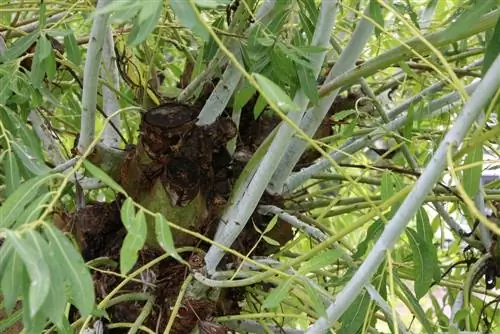
It is important when planting unrooted cuttings that you do not plant them the wrong way round. The lower end must be in the ground, otherwise no roots will form. When cutting cuttings, you can make sure that the lower end is cut straight and the upper end is cut diagonally. This is how you avoid mistakes.
- As described above, willow cuttings are best cut in summer.
- You cut off as thick a branch as possible or a whole strong willow branch.
- The stronger this piece, the stronger the new willow. They should be as thick as your thumb, thicker is also good.
- A 20 cm long piece is sufficient for the cuttings. But you can also plant the entire branch, depending on what you want to do with it.


